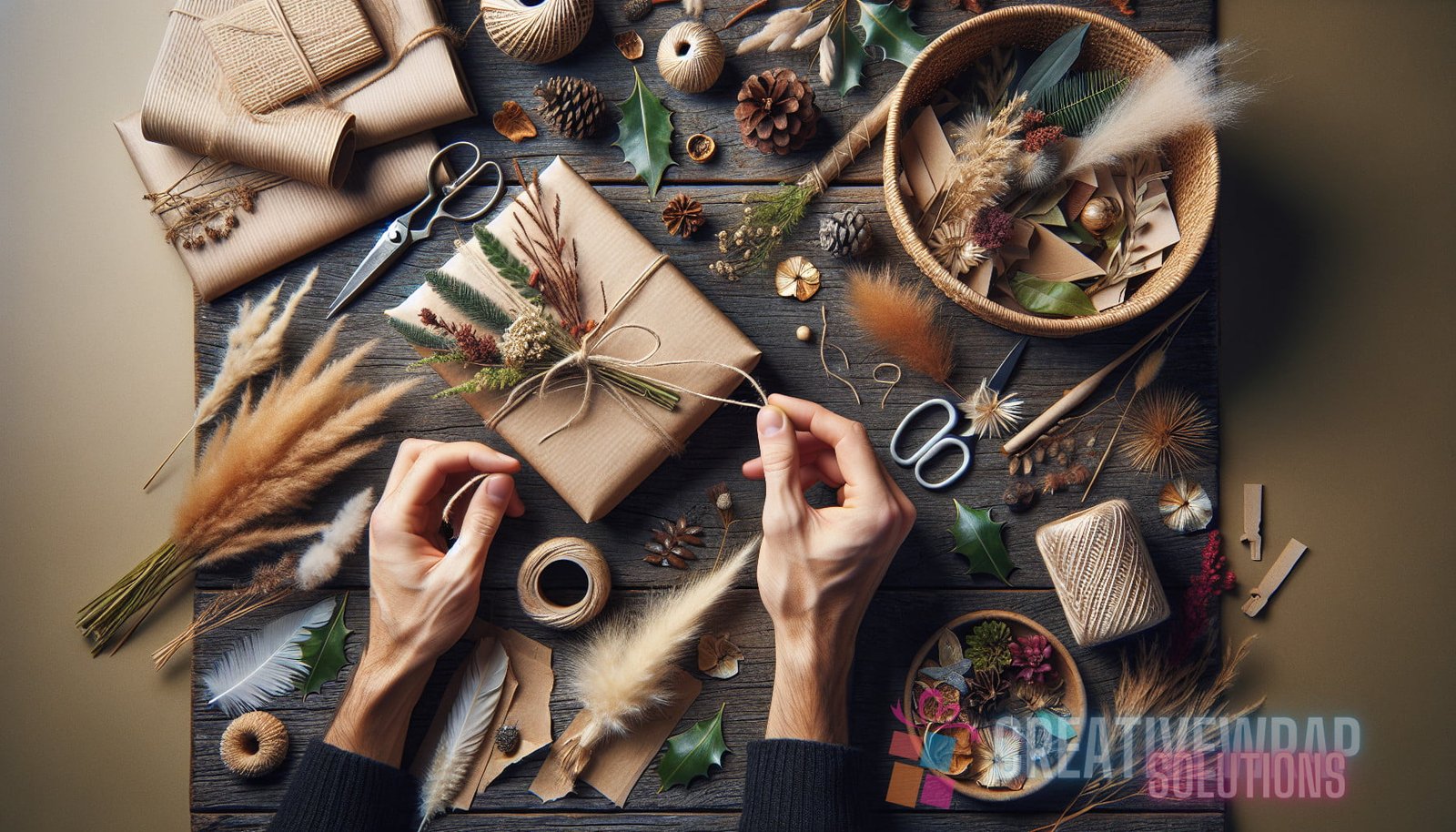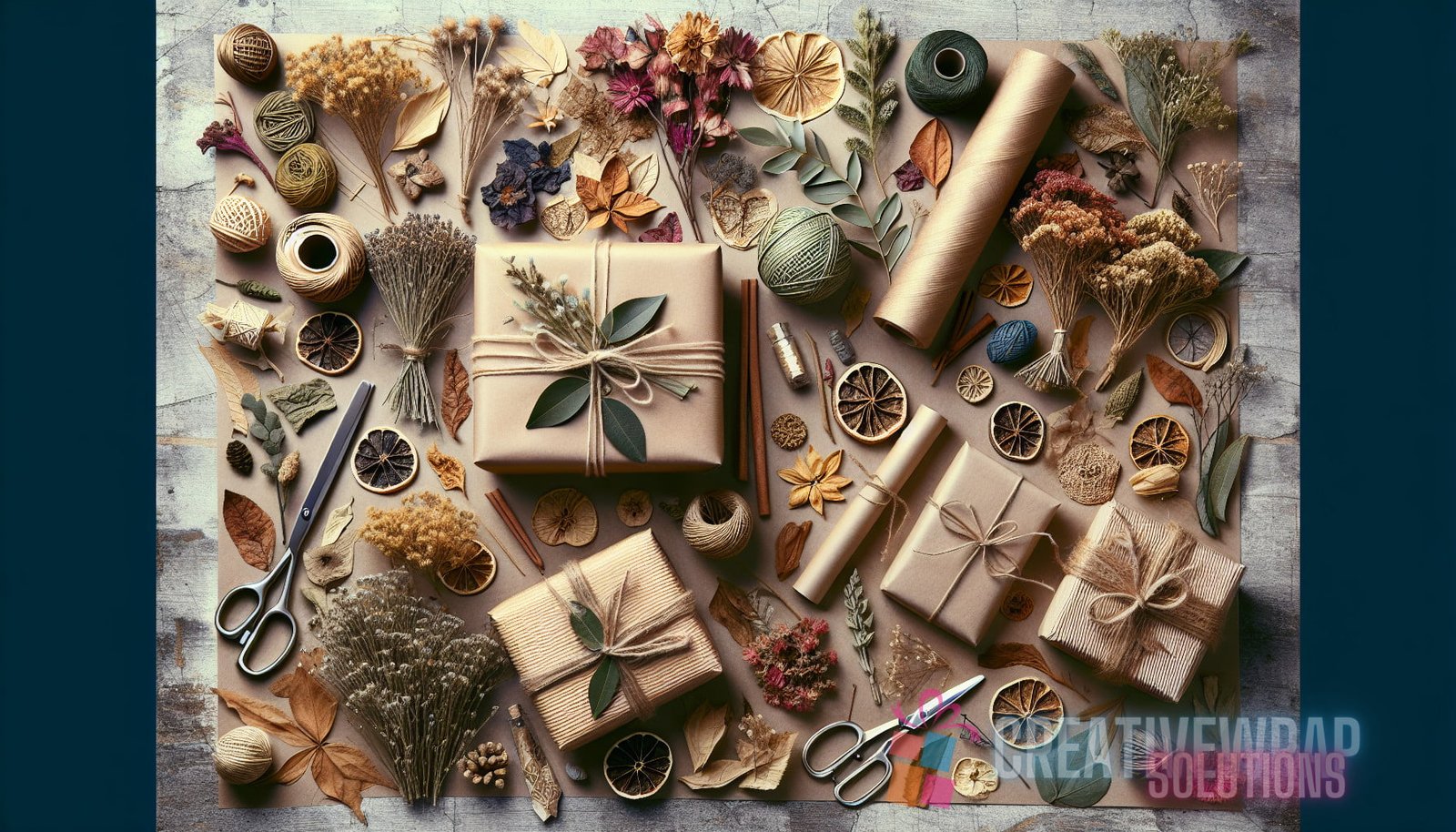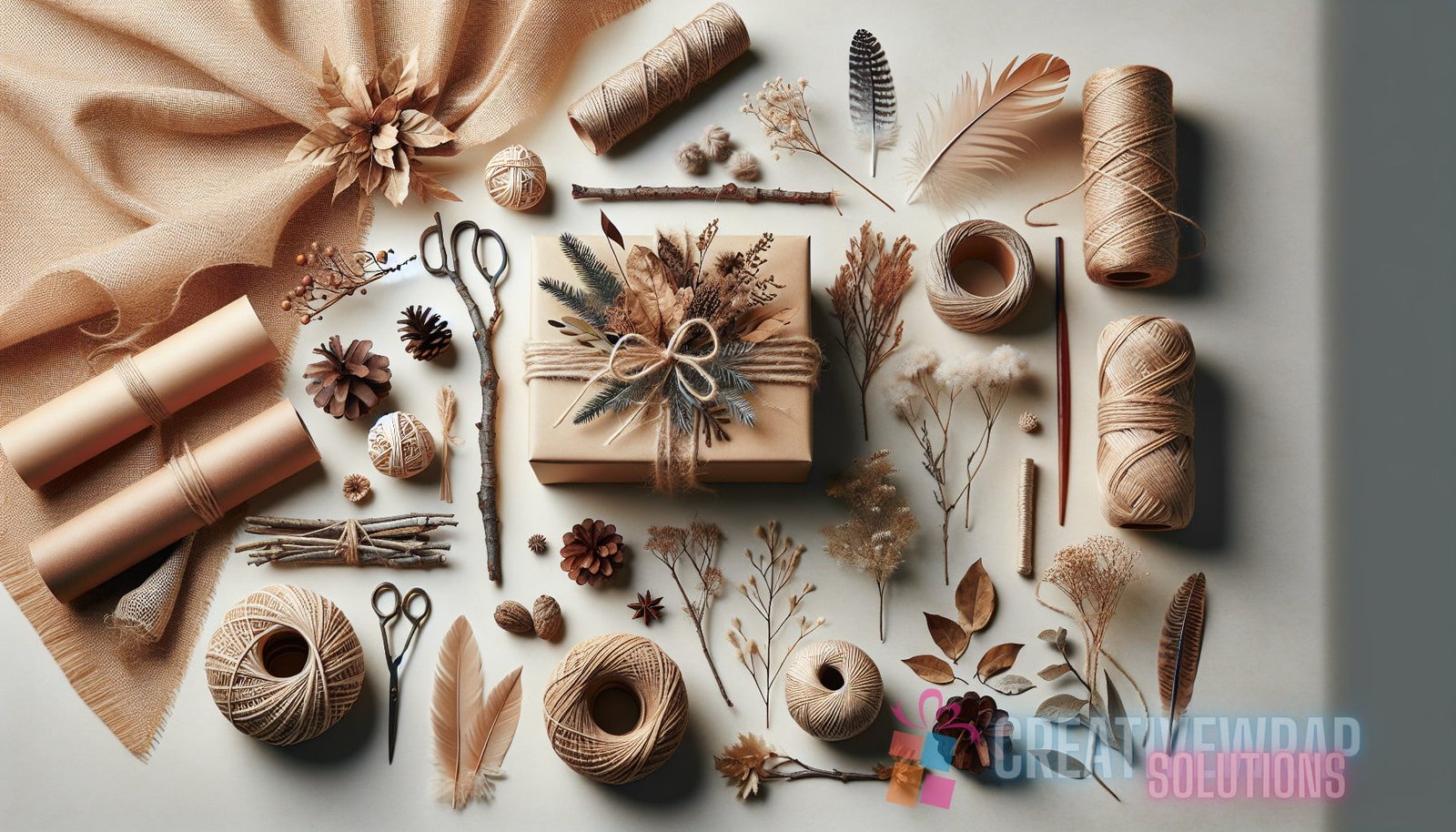Introduction
Unveiling the Aesthetics: The Art of Gift Wrapping with Natural Materials Explained
Gift wrapping is an art form that adds an extra touch of thoughtfulness and creativity to any present. While many people opt for store-bought wrapping paper and ribbons, there is another approach that embraces the beauty of nature – natural wrapping.
Natural wrapping involves using a variety of organic materials, such as flowers, leaves, twine, and even fruits, to create stunning and eco-friendly gift presentations. In this guide, we’ll dive deep into the world of natural wrapping, exploring different techniques, materials, and tips to help you create unique and environmentally-friendly gift wraps that are sure to impress.
So, whether you’re a seasoned gift wrapper looking to explore new techniques or a beginner eager to learn the art of natural wrapping, this comprehensive guide has got you covered.

Benefits of Natural Wrapping
Using natural materials for gift wrapping offers several benefits, both to the environment and to the overall aesthetic of the gift. Here are some of the key advantages:
1. Eco-Friendly: Natural wrapping reduces waste by utilizing materials that are biodegradable, compostable, and sustainable. Unlike traditional wrapping paper, which often contains plastic coatings and chemical dyes, natural materials leave a smaller carbon footprint. 2. Unique and Personal: Natural materials provide a one-of-a-kind, organic touch to gifts. By incorporating elements like dried flowers, twigs, or leaves, you can create customized and personalized wraps that reflect the recipient’s style and taste. 3. Cost-Effective: Many natural wrapping materials can be sourced from your own backyard or local surroundings, making them a cost-effective alternative to buying expensive wrapping paper and ribbons. By repurposing materials, you can save money while still achieving stunning results. 4. Health Benefits: Avoiding the use of synthetic materials reduces the risk of exposure to harmful chemicals and allergens. This is especially important when wrapping gifts for people with sensitivities or allergies. 5. Connection to Nature: Using natural materials allows you to connect with the beauty of nature and bring a touch of the outdoors into your gift-giving experience. This connection to nature can provide a calming and soothing effect, both for the gift wrapper and the recipient.Popular Natural Wrapping Materials
To achieve beautiful and sustainable gift wraps, it’s important to select the right natural materials. Here are some popular options that can elevate your gift wrapping game:
1. Recycled Paper: Using recycled paper is an excellent way to reduce waste and repurpose materials. Look for recycled kraft paper, newspaper, or even old maps to create a rustic and vintage look. 2. Flowers and Leaves: Fresh flowers and dried leaves add a touch of elegance and beauty to any gift. Choose seasonal flowers or dried leaves in various colors and shapes to create unique designs. 3. Twine and Raffia: Natural twine and raffia are versatile materials that can be used to tie up gifts or create bows. They add a rustic and earthy feel to the overall presentation. 4. Burlap: Burlap is a coarse cloth made from jute or hemp fibers. It is durable, biodegradable, and adds a rustic charm to any gift wrap. 5. Fruits and Berries: Incorporating fresh fruits and berries into your gift wrap not only adds a pop of color but also a delightful fragrance. Just make sure to choose fruits that are sturdy and won’t spoil quickly. 6. Feathers, Pinecones, and Twigs: Natural materials like feathers, pinecones, and twigs can be used as embellishments to add a unique and whimsical touch to your gift wraps.Techniques for Natural Wrapping
Now that you know the benefits and popular materials for natural wrapping let’s explore some techniques to help you create stunning gift presentations.
1. Simple and Minimalist Wraps: For a clean and minimalist look, opt for a simple wrap using recycled paper, twine, and a sprig of fresh herbs or a dried leaf as an accent. 2. Layering: Create depth and texture by layering multiple natural materials. For example, start with a base of recycled paper, then add a strip of burlap or lace, and finish off with a twine bow and dried flowers. 3. Pressed Flower Wraps: Preserve the beauty of flowers by pressing them between sheets of wax paper and heavy books. Once dried, use the pressed flowers to decorate your gift wrap or create intricate designs. 4. Fruit and Berry Wraps: Wrap small gifts in transparent cellophane and adorn them with fresh fruits or berries. This technique works particularly well for edible gifts or summer-themed presents. 5. Leaf Imprints: Create unique patterns and imprints on your gift wraps by using leaves as stamps. Simply apply paint to a leaf and press it onto the wrapping paper. Experiment with different colors and leaf shapes for a personalized touch.
Tips for Natural Wrapping
To ensure your natural wrapping efforts are a success, here are some tips to keep in mind:
1. Plan Ahead: Collect natural materials in advance, taking into account the type of gift you’ll be wrapping. Some materials may require drying or pressing, so allow enough time for these processes. 2. Experiment and Have Fun: Natural wrapping is all about embracing creativity and trying new things. Don’t be afraid to experiment with different materials, colors, and textures to achieve the desired look. 3. Secure Materials Properly: Use glue dots or double-sided tape to secure natural materials on the gift wrap. Avoid using regular tape, as it may not adhere well to certain surfaces or damage delicate materials. 4. Consider the Recipient: Take into account the recipient’s preferences and tastes when selecting natural materials. If they have allergies, skip flowers or opt for unscented options. 5. Give Instructions: If you’re gifting an item that requires special handling or care for the natural materials used in the wrap, include instructions or a small note to ensure the recipient knows how to care for the gift. 6. Document and Share: Capture your natural wrapping creations by taking photos and sharing them on social media or personal blogs. You’ll inspire others to adopt eco-friendly practices and showcase your creative skills.Conclusion
The art of natural wrapping combines creativity, sustainability, and the beauty of nature to create unique and memorable gift presentations. By embracing natural materials such as recycled paper, flowers, twine, and fruits, you can enhance the aesthetic appeal of your gifts while reducing your environmental footprint.
Whether you’re an experienced gift wrapper or just starting out, experimenting with natural wrapping techniques and materials can bring a whole new level of beauty and personalization to your gift-giving experience. So, unleash your creativity, explore different techniques, and enjoy the process of wrapping gifts with natural materials.
Remember to check out the articles on gift wrapping techniques and the ultimate guide to innovating gift wrapping techniques available at Creative Wrap Solutions for more inspiration and step-by-step tutorials.Now that you have a comprehensive understanding of natural wrapping, it’s time to get creative and make your gift wraps stand out with the beauty of nature.
External Link: For more information about gift wrapping and its history, you can visit the Wikipedia page on gift wrapping.


